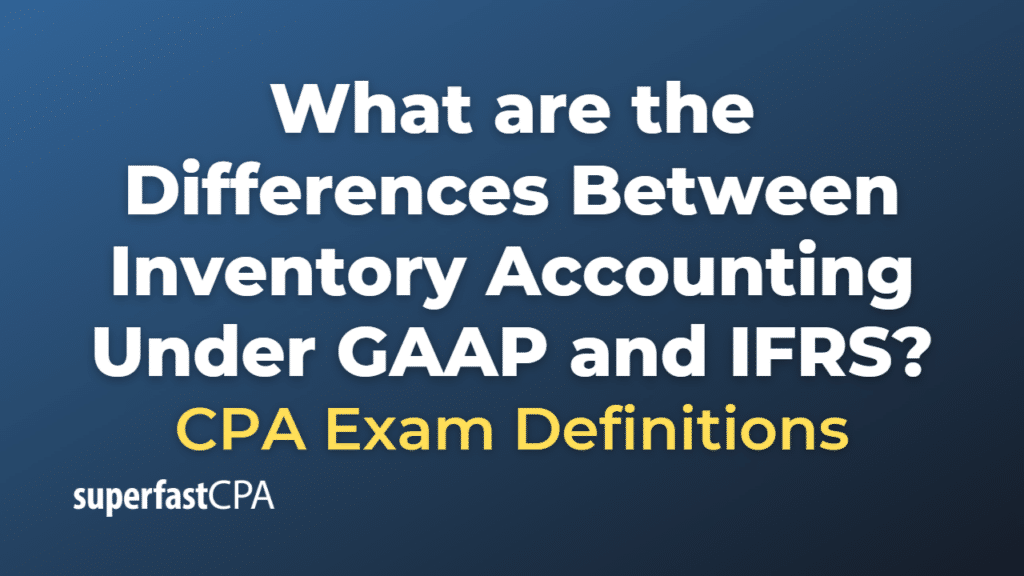Differences Between Inventory Accounting Under GAAP and IFRS
The Generally Accepted Accounting Principles (GAAP) and the International Financial Reporting Standards (IFRS) are two sets of accounting standards used in the United States and internationally, respectively. Both sets of standards provide guidelines for how companies should account for inventory, but there are some differences between the two.
Here are the main differences in inventory accounting under GAAP and IFRS:
- Inventory Costing Methods: Both GAAP and IFRS allow companies to use the First In, First Out (FIFO) and the weighted average cost methods. However, the Last In, First Out (LIFO) method is only allowed under GAAP. IFRS does not permit the use of the LIFO method.
- Inventory Write-Downs: Both GAAP and IFRS require companies to write down the value of their inventory when it falls below cost, for example due to obsolescence or market changes. However, under GAAP, once a write-down has been made, it cannot be reversed if the market value of the inventory subsequently increases. Under IFRS, a write-down can be reversed in a later period if the value of the inventory increases, but the value can’t exceed the original cost.
- Inventory Classification: Under IFRS, inventories are classified as either merchandise, production supplies, work in progress, or finished goods. Under GAAP, there is no required classification scheme and companies have more flexibility in how they classify inventory.
- Presentation of Expenses : Under GAAP, certain inventory-related costs (like purchasing, warehousing, and other handling costs) can be included in administrative expenses. In contrast, IFRS requires these costs to be recognized as part of the cost of inventory.
These are some of the major differences, but the actual practice can be more complex and nuanced. It’s also worth noting that accounting standards can evolve over time, so these differences may not be permanent. Always consult with a professional or trusted source for the most current and detailed information.
Example of the Differences Between Inventory Accounting Under GAAP and IFRS
Let’s consider a fictional company, “Widget Co.”, that produces widgets, and look at how some differences between GAAP and IFRS could affect their inventory accounting.
- Inventory Costing Method: Assume Widget Co. has the following transactions in the year:
- January: Bought 100 widgets for $10 each
- March: Bought 200 widgets for $15 each
- May: Sold 150 widgets
Under the FIFO method (allowed under both GAAP and IFRS), the cost of goods sold (COGS) would be calculated based on the cost of the earliest purchased items. So, it would be $10 * 100 (from January purchase) + $15 * 50 (from March purchase) = $1,750.
Under the LIFO method (allowed only under GAAP), the COGS would be calculated based on the cost of the latest purchased items. So, it would be $15 * 150 = $2,250.
This difference in cost allocation can significantly impact the company’s reported profitability and income taxes.
- Inventory Write-Downs: Assume at the end of the year, the market value of the remaining widgets falls to $8 per widget due to some market changes. Both GAAP and IFRS would require Widget Co. to write down the value of its inventory.
However, let’s say next year, the market value of the widgets rises again to $14 per widget. Under IFRS, Widget Co. could reverse the previous year’s write-down, up to the original cost. Under GAAP, the write-down could not be reversed, and the inventory would remain valued at the lower amount.
These examples illustrate how the choice of accounting standards can affect a company’s financial reporting. In reality, inventory accounting is a complex process that requires careful interpretation of the applicable standards, and often involves significant judgement and estimates.













